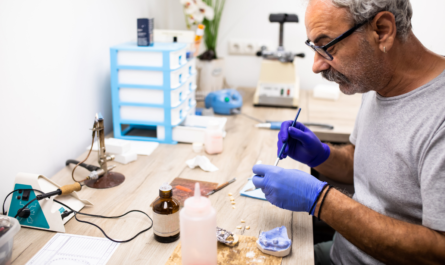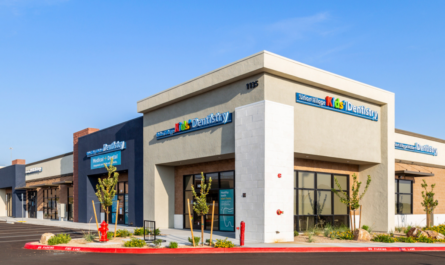No matter how dentists grow their business, it comes down to evidence-based best practices and care-driven patient service.
There’s no denying that, in today’s marketplace, growth and expansion are crucial to practicing dentistry in the future. But, whether dentists are expanding their practice to include multispecialty providers under one roof; acquiring additional practices to form a larger group; or joining a large national corporate dental group, one thing is clear, according to Rhonda Mullins, a dental practice strategist devoted to creating best practice models for the future of dentistry: “Patient care delivery is vital to the sustainability and profitability of the dental practice business model that every dental professional desires to create.”
“It all comes down to dentists collaborating and providing excellence in patient care,” says Mullins, who guides clients in designing and executing their vision of why and how they want to practice dentistry, including acquiring, merging or expanding their business models. “Especially when dentists are acquiring and merging practices into their professional corporations, patients must feel that the value, trust and benefits are delivered with optimum outcome results for the patient and their expectations,” she says. “The trust factor must be immeasurable. Yes, a model for growth should include expanding the profit margin and hiring additional dental team members, but organic growth will be equal to the value and the brand insistence, as well as the momentum of the practice’s relationship capital in its community. The profits will be the end result of patient Care Driven® service delivery innovation. It’s about the size of patient base, retention and increasing per patient value of those patients. This is the driver for decisions about which model a dentist might consider before acquiring additional practices.”
Indeed, dentists “can only get so much out” of a small patient base, she continues. “Charging higher fees for a small patient base forces dentists to examine the risk factors of short- and long-term strategies when the practice is not getting enough new patients annually for growth, which will be significant enough for them not to feel they are running out of patients, she says. “When a practice is limited to 1,000 patients, they will be challenged not to miss the peak of the bell curve of the life cycle of the practice, and that peak is the most opportune time for them to make a decision regarding an acquisition that would include another larger platform to practice in, with another dentist and team members. If orchestrated in the most efficient way, a merger will result in the most efficient and effective growth spurt. In theory, this business strategy will add another life cycle bell curve to the practice, which perpetuates an optimum outcome, sustainable practice business growth model.”
At your service
Equally important is service delivery innovation, says Mullins. The workforce, the processes, the place and the supporting technology are “component keys in a care delivery and practice growth model,” she explains. “Their combined integration plays a role in minimizing risk for meaningful growth and measurable profitability in the shortest period of time. Every provider in a group practice must have a congruent approach to patient care and business growth objectives, and they must have the same attitude and commitment to excellence. You need the right people in the right places, and the right systems and fully utilized supporting technology in order to make growth a seamless transformation through a strategic transition. When you do this, the outcome is the architecture of the plan – a holistic outcome for future scaling of the model.
“The multi-practice model must remove the sway – or minimize risks – and ensure that each team at every office location is aligned,” she continues. “Managerial and cultural changes, profitability and transitional strategic moves all must be considered when adding new practices. You want to see fluidity in every single team member, at every location. And, it’s often the real design office coordinators (DOCs) in the administrative, hygiene and auxiliary departments of a practice who ensure just such alignment and momentum. Patients’ trust [in the practice] often depends on their trust in these team members who see and converse with them more consistently and ensure the good will of every practice. No matter what model dentists pursue, the value of the practice is in the good will (the relationship, retention and transferability of the patients from one dentist to another). Dentists who retain top-line teams will ensure the Care Driven® focus stays in place.”
It’s one thing to take a practice from $1 million to $1.5 million, notes Mullins. But taking a practice from $1.5 million to $3 million involves “another strategic design approach for successful scaling of a business model,” she says. “Dentists must understand that increasing revenue is one thing, while scaling a model for multiple providers and/or locations is another thing. A risk assessment and, sometimes, a creative/innovative approach is required when designing a solid plan to put in place.
“Once dentists have the right approach in place, they can scale the model more efficiently and effectively with no city limits,” she points out, adding that they also need to understand that, all said and done, this business is really about two questions:
- Do we love what we do?
- Did we make our patients feel they made the right choice in a provider?
Sidebar:
Rhonda Mullins Bio
Rhonda Mullins is a speaker, consultant and strategic coach for business and dental practice development. Her experience includes entrepreneurial, single and group practice managerial business strategy, and practice development participating with a 360-degree view of dentistry through platforms in:
- Dental Informatics Research, Dental Education, Leadership, Business Growth
- and Practice Development/Management.
- Dental Transitions: Acquisitions, Mergers, Buy/Sell and Associates.
- Dental Lab Technology Advancements.
Her affiliations include:
- Founder Kois Atlanta Study Club.
- AACD Smile Foundation.
- Oral Health America.
- Adar Dental Network, LLC
- National Speakers Association.
- American Academy of Cosmetic Dentistry.
- 2012 Past President of Georgia Academy of Cosmetic Dentistry.
- Academy of Dental Management Consultants.
- Kois Center.
For more information visit: www.rhondamullins.com.





